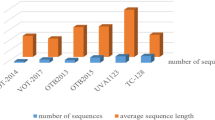Abstract
If an observer is moving rigidly with bounded rotation then normal flow measurements (i.e., the spatiotemporal derivatives of the image intensity function) give rise to a constraint on the oberver's translation. This novel constraint gives rise to a robust, qualitative solution to the problem of recovering the observer's heading direction, by providing an area where the Focus of Expansion lies. If the rotation of the observer is large then the solution area is large too, while small rotation causes the solution area to be small, thus giving rise to a robust solution. In the paper the relationship between the solution area and the rotation and translation vectors is studied and experimental results using synthetic and real calibrated image sequences are presented. This work demonstrates that the algorithm developed in (Horn and Weldon 1987) for the case of pure translation, if appropriately modified, results in a robust algorithm that works in the case of general rigid motion with bounded rotation. Subsequently, it has the potential to replace expensive accelerometers, inertial systems and inaccurate odometers in practical navigational systems for the problem of kinetic stabilization, which is a prerequisite for any other navigational ability.
Similar content being viewed by others
References
J. Aloimonos, “Purposive and qualitative active vision”,Proc. ARPA Image Understanding Workshop, 1990a, 816–828.
J. Aloimonos (Ed.),CVGIP: Image Understanding 56, 1992.
J. Aloimonos and C.M. Brown, “Direct processing of curvilinear sensor motion from a sequence of perspective images”,Proc. Workshop on Computer Vision: Representation and Control, Annapolis, MD, 72–77, 1984.
J. Aloimonos and D. Shulman,Integration of Visual Modules: An Extension of the Marr Paradigm, Academic Press, Boston, 1989.
J. Aloimonos, I. Weiss, and A. Bandopadhay, “Active vision ”,Int'l. J. Comp. Vision 2, 1988, 333–356.
D.H. Ballard, “Parameter networks”,Artificial Intelligence 22, 1984, 235–267.
A. Blake, S. Murray and A. Sinclair, “Egomotion from normal flow”, personal communication, 1992.
A. Bruss and B.K.P. Horn, “Passive navigation”,Computer Vision, Graphics Image Processing 21, 1983, 3–20.
W. Burger and B. Bhanu, “Estimating 3D egomotion from perspective image sequences”,IEEE Trans. PAMI 12, 1990, 1040–1058.
Z. Duric, A. Rosenfeld and L.S. Davis, “Passive navigation using the Frenet-Secret model,” Proc. 4th ICCV, Berlin, Germany, 1993, pp. 363–369.
O. Faugeras and S. Maybank, “Motion from point matches: Multiplicity of solutions”,Int'l. J. Computer Vision 4, 1990, 225–246.
C. Fermüller, “Basic Visual Capabilities,” Ph.D. Thesis, Institute for Automation, Technical University of Vienna, 1993a (also available as Technical Report 668, Center for Automation Research, University of Maryland).
C. Fermüller, “Navigational preliminaries”, inActive Perception, Y. Aloimonos (Ed.), Lawrence Erlbaum Associates, Inc., Publishers, 1993b.
E. Francois and P. Bouthemy, “Derivation of qualitative information in motion analysis”,Image and Vision Computing 8, 1990, 279–288.
B.K.P. Horn, “Relative Orientation”,Int'l J. Comp. Vision 4, 1990, 59–78.
B.K.P. Horn and E.J. Weldon, “Computationally efficient methods of recovering translational motion”,Proc. International Conference on Computer Vision, 1987, 27–11.
J.J. Koenderink and A.J. van Doorn, “Invariant properties of the motion parallax field due to the movement of rigid bodies relative to an observer ”,Optica Acta 22, 1975, 773–791.
G.A. Korn and T.M. Korn,Mathematical Handbook for Engineers and Scientists, McGraw Hill, 1968.
H.C. Longuet-Higgins, “A computer algorithm for reconstructing a scene from two projections”,Nature 293, 1981, 133–135.
H.C. Longuet-Higgins and K. Prazdny, “The interpretation of a moving retinal image”,Proc. Royal Soc. London B 208, 1980, 385–397.
D. Marr,Vision, W.H. Freeman, San Francisco, 1982.
S.J. Maybank, “The angular velocity associated with the optical flow field arising from motion through a rigid environment”,Proc. Royal Soc. London A 401, 1985, 317–326.
S. Negahdaripour, Ph.D. Thesis, MIT Artificial Intelligence Laboratory, 1986.
R.C. Nelson and J. Aloimonos, “Finding motion parameters from spherical flow fields (Or the advantages of having eyes in the back of your head) ”,Biological Cybernetics 58, 1988, 261–273.
R. Nelson and J. Aloimonos, “Using flow field divergence for obstacle avoidance in visual navigation”,IEEE Trans. PAMI 11, 1989, 1102–1106.
M.E. Spetsakis and J. Aloimonos, “Optimal computing of structure from motion using point correspondences in two frames”,Proc. International Conference on Computer Vision, 1988.
M.E. Spetsakis and J. Aloimonos, “Unification theory of structure from motion”, Technical Report CAR-TR-482, Computer Vision Laboratory, Center for Automation Research, University of Maryland, College Park, 1989.
M.E. Spetsakis and J. Aloimonos, “Structure from motion using line correspondences”,Int'l. J. Computer Vision 4, 1990, 171–183.
W.B. Thompson and J.K. Kearney, “Inexact vision”,Proc. Workshop on Motion 1986, 15–22.
W.B. Thompson and J.S. Painter, “Qualitative constraints for structure from motion”, in Y. Aloimonos (Ed.),CVGIP: Image Understanding 56, 1992, 69–77.
M. Tistarelli and G. Sandini, “Dynamic aspects in active vision”, in Y. Aloimonos (Ed.),CVGIP: Image Understanding,56, 1992, 87–104.
R.Y. Tsai and T.S. Huang, “Uniqueness and estimation of three dimensional motion parameters of rigid objects with curved surfaces”,IEEE Trans. PAMI 6, 1984, 13–27.
S. Ullman,The Interpretation of Visual Motion, MIT Press, Cambridge, MA, 1979.
D. Weinshall, “Qualitative depth from stereo with applications”,CVGIP 49, 1990,222–241.
D. Weinshall, “Direct computation of qualitative 3D shape and motion invaraiants”,IEEE Trans. PAMI 13, 1991, 1236–1240.
J. Weng, T.S. Huang and N. Ahuja, “A two step approach to optimal motion and structure estimation”,Proc. IEEE Computer Society Workshop on Computer Vision, 1987.
G. White and E. Weldon. Utilizing Gradient Vector Distributions to Recover Motion Parameters. InProc. IEEE Workshop on Computer Vision, pages 132–137, 1987.
G.S. Young and R. Chellappa, “3-D motion estimation using a sequence of noisy stereo images”,Proc. IEEE Conference on Computer Vision and Pattern Recognition, 1988.
A. Zisserman and R. Cipolla, “Qualitative surface shape from deformations of image curves”,Proc. Workshop on Qualitative Vision, AAAI '90, 1990, 41–45.
Author information
Authors and Affiliations
Additional information
This work was funded in part by ARPA, ONR, NSF (under a Presidential Young Investigator Award, Grant IRI-90-57934), Al-liant Techsystems, Inc., Texas Instruments, Inc., and Sony Corporation. Thanks to Sara Larson for her expert help in preparing this paper, to Zoran Duric for performing the experiments, and to the anonymous reviewers whose comments significantly improved the manuscript.
Rights and permissions
About this article
Cite this article
Aloimonos, Y., Duric, Z. Estimating the heading direction using normal flow. Int J Comput Vision 13, 33–56 (1994). https://doi.org/10.1007/BF01420794
Received:
Revised:
Issue Date:
DOI: https://doi.org/10.1007/BF01420794




